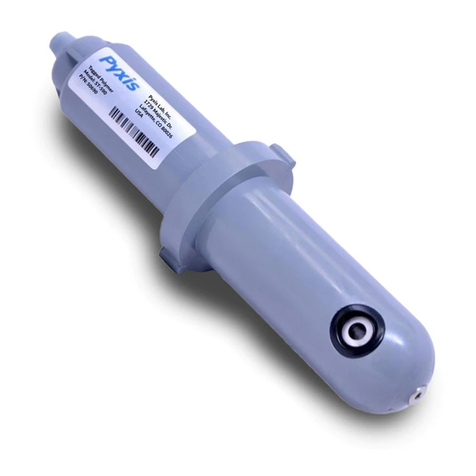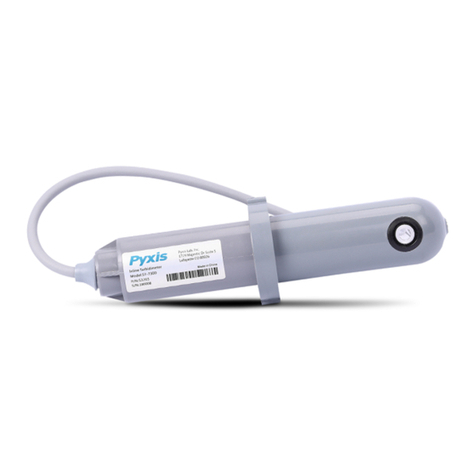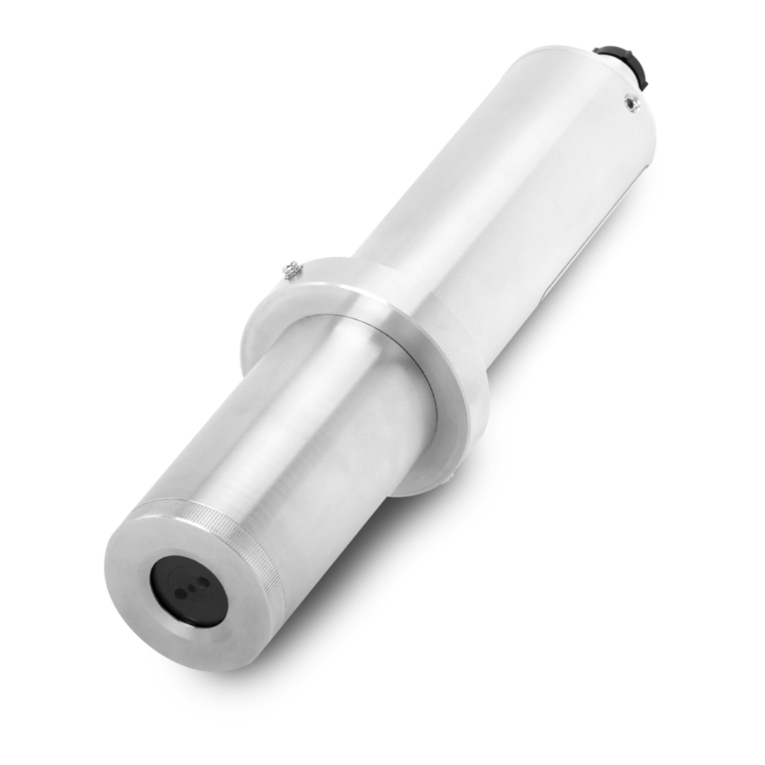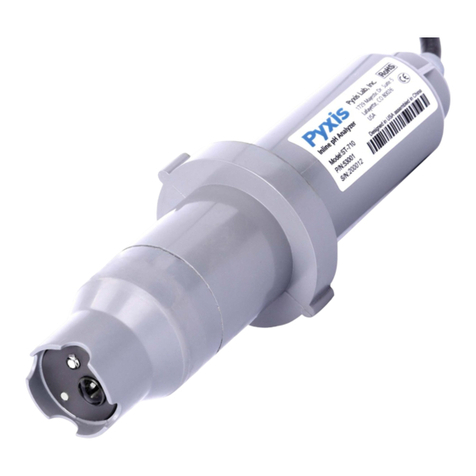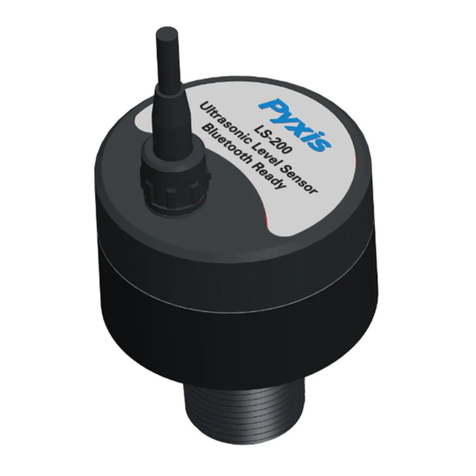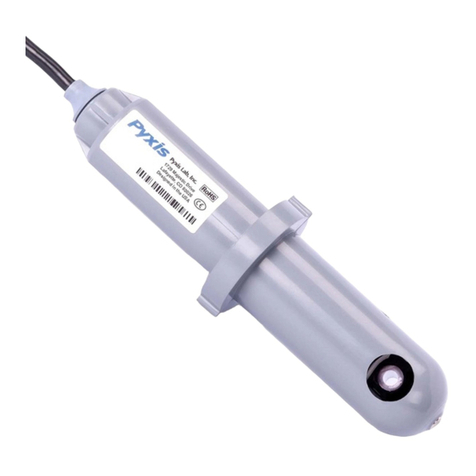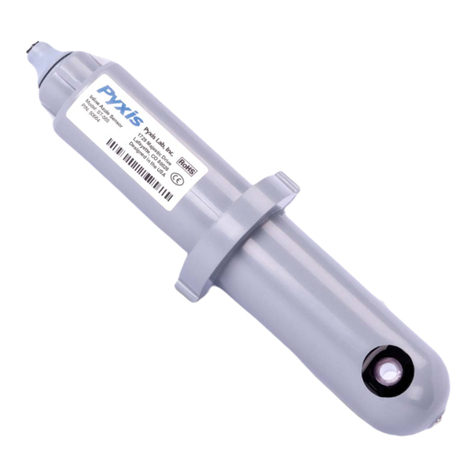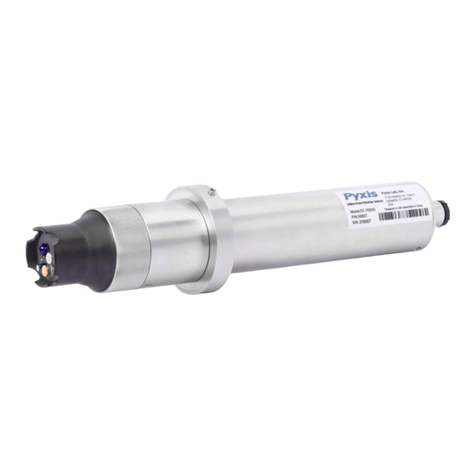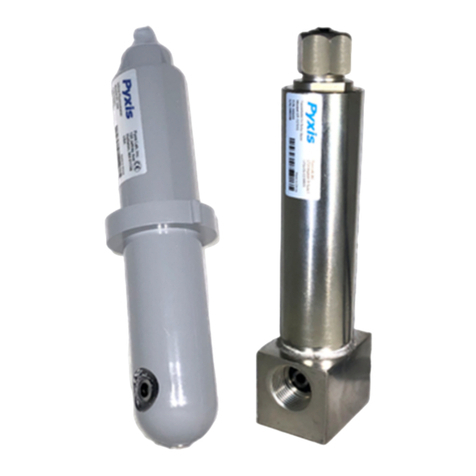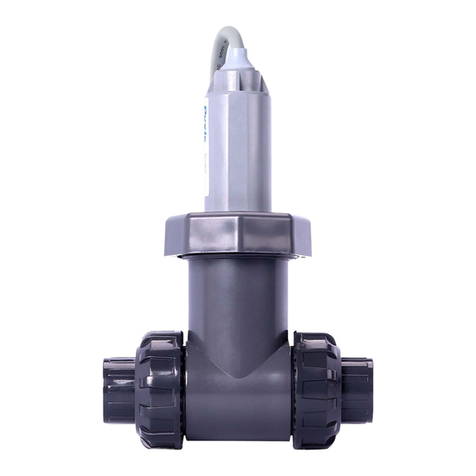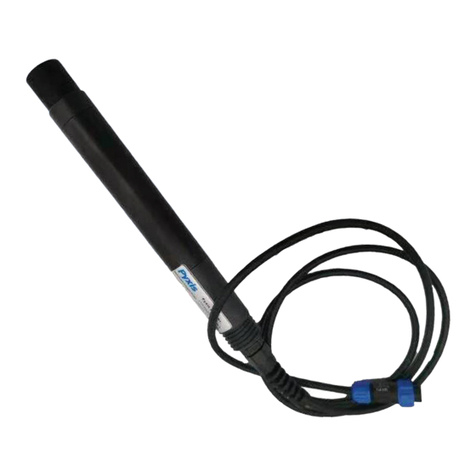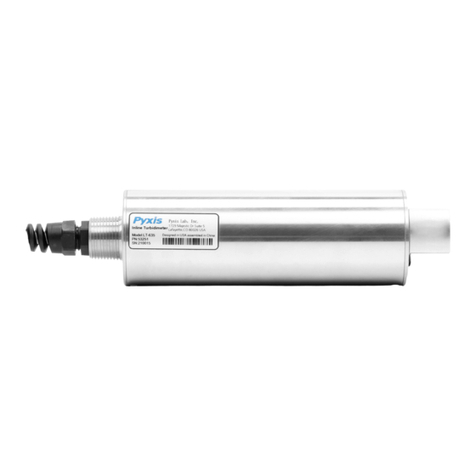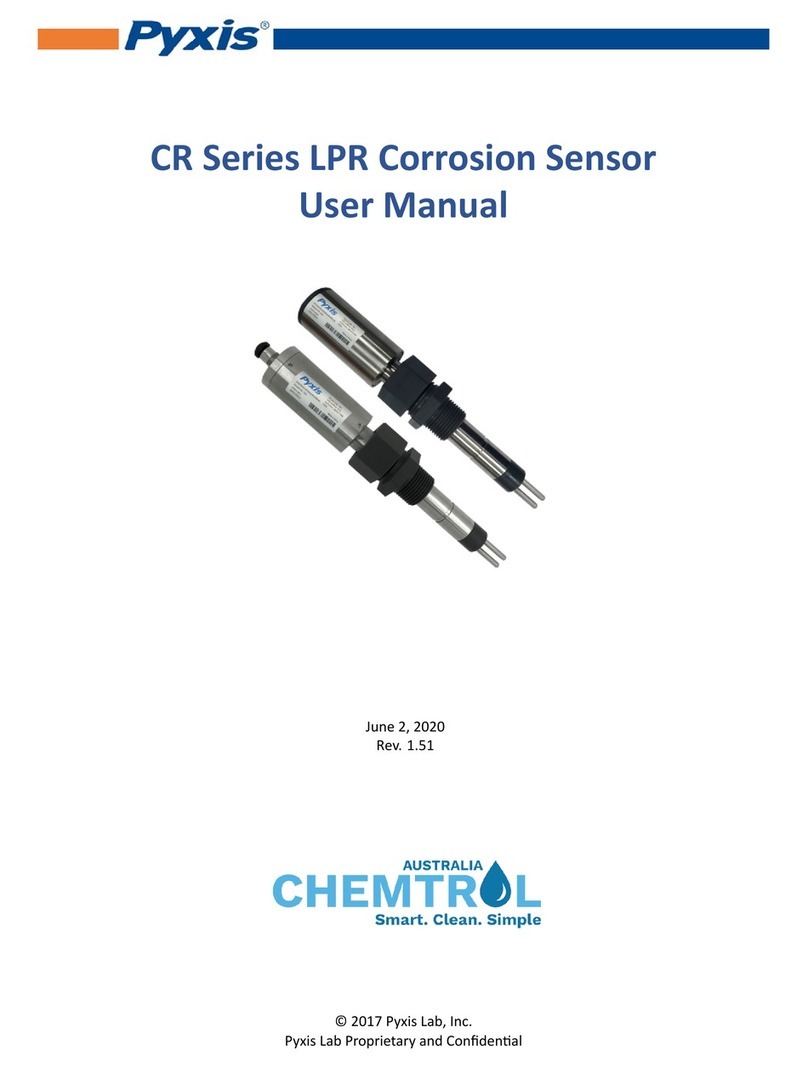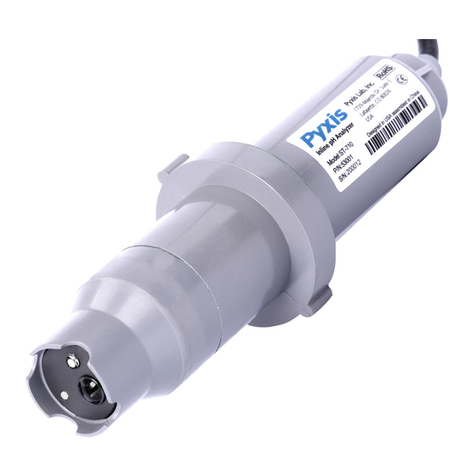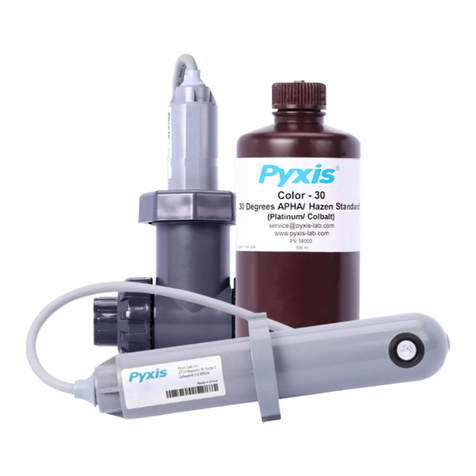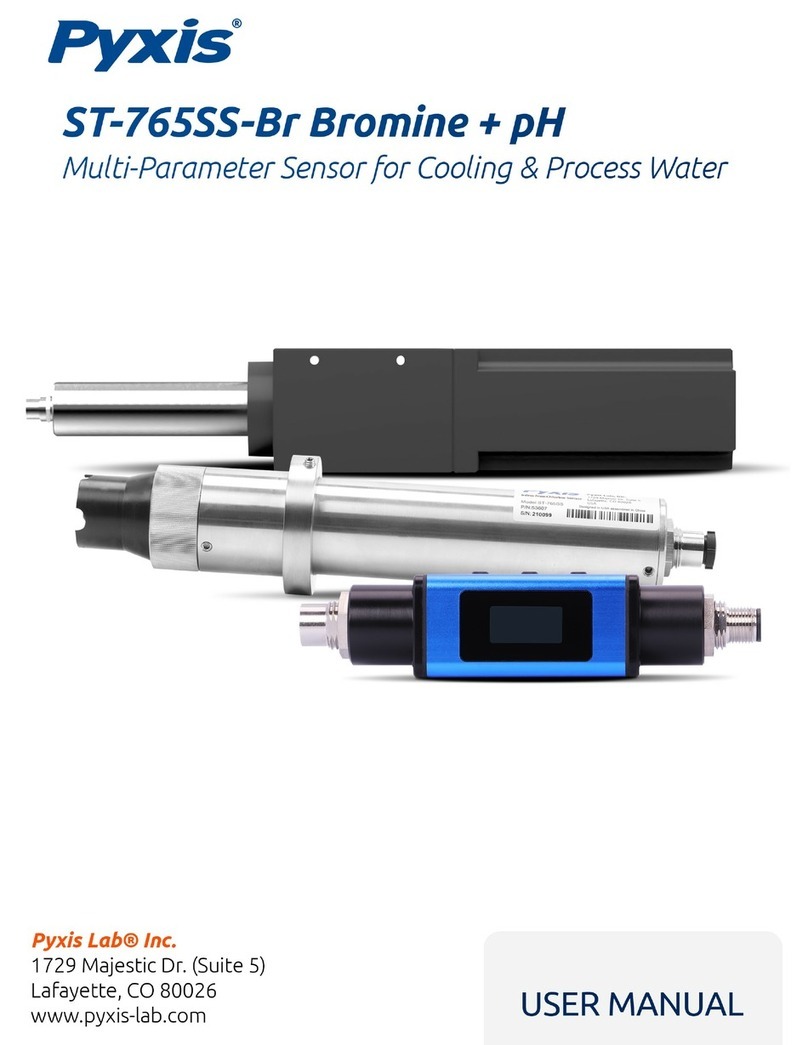1Introducing the Pyxis ST-772 Probe
The Pyxis ST-772 dissolved oxygen (DO) sensor is based on the principle of fluorescence quenching to
determine the dissolved oxygen content in water. It incorporates Pyxis' advanced technology in the field
of fluorescence detection and uses dual light source detection technology with excitation and reference
light sources, offering a wide detection range and low detection limit. The sensor integrates temperature
and pressure sensors, which can perform temperature and pressure compensation for the measurement
of dissolved oxygen based on ambient environmental conditions present in the application of use. The
ST-772 offers an easily replaceable, front loading DO membrane cap that has been independently
developed by Pyxis Lab, with a typical service life of up to two years. This unique DO membrane cap design
incorporates a black microporous PTFE membrane material designed to provide extreme scratch
resistance, extended life span and simple replacement. The flat front-end design of the ST-772 makes this
platform less prone to contamination or fouling and is very easy to clean. The sensor body is composed
of 304 stainless steel and is well suited for aggressive industrial application use. The ST-772 may be
utilized in a drop in submersed application with the Pyxis submersion rod and stand-pipe assembly, or it
may also be used in an in-line pressurized Tee assembly format. Both options are discussed in the
Installation Section 2.0 of this manual. The ST-772 offers both 4-20mA and RS-485 Modbus outputs and
is Bluetooth enabled when used in conjunction with the MA-CR Bluetooth Adapter.
1.1 Features of the Pyxis ST-772 Probe
The ST-772 includes the following features:
•0.004-20mg/L measurement range
•Built-in temperature and pressure sensor with automatic compensation
•Accurate and stable measurement with ultra-low drift
•Built-in transmitter without preamplifier or meter head
•Dual Outputs both 4-20mA isolated signal or RS-485 Modbus
•Long-distance transmission with higher stability & accuracy
•Wireless Calibration, Diagnostics, Data Trend via uPyxis APP when used with MA-CR Adapter
•The sensor can be Slope calibrated with air or air saturated water
•Zero-point calibration with 5% Sodium Sulfite solution or Nitrogen gas
•Submersible or Inline Pipe Tee installation accessories are optional
•Suitable for dissolved oxygen monitoring of
oActivated Sludge / Aerated Basin
oWastewater & Sewage Processing
oChemical & Process Water Applications
oDomestic Water Applications
oFiltration Applications
oAquaculture
oAgriculture
